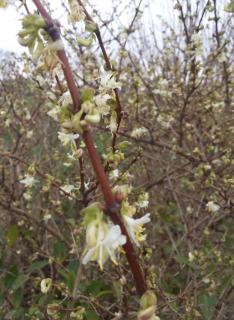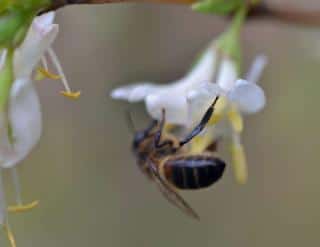

Lonicera purpusii, the ‘Winter Beauty’ honeysuckle, offers us deliciously fragrant winter blooms.
Key Lonicera purpusii facts
Name – Lonicera purpusii
Family – Caprifoliaceae (honeysuckle family)
Type – shrub
Height – 16 to 32 feet (2 to 3 m)
Exposure – full sun
Soil – ordinary
Foliage – deciduous or evergreen
Flowering – December to April (winter)
Caring for it is easy and both foliage and blooming are extremely ornamental.
Lonicera purpusii are planted in fall, but it’s also possible to plant them up to spring. Apart from these two ideal periods, avoid freezing and strong heat.
As for placing, favor any sunbathed exposure.
 It isn’t really necessary to prune it: your Lonicera purpusii can do well without ever being pruned.
It isn’t really necessary to prune it: your Lonicera purpusii can do well without ever being pruned.
When your honeysuckle starts growing a bit sparse, it is also possible to trim it back severely, it will recover beautifully with renewed growth.
Winter Beauty honeysuckles, or Lonicera purpusii, are bushy shrubs that produce delicately fragrant flowers in winter.
 For a few weeks somewhere between December and March, depending on the climate and the are, it bears creamy white colored discrete flowers, that free a powerful jasmine-like perfume.
For a few weeks somewhere between December and March, depending on the climate and the are, it bears creamy white colored discrete flowers, that free a powerful jasmine-like perfume.
Indeed, this plant boasts white flowers that will decorate our gardens in winter, either planted in the ground or in pots. Pollinators love it, since it provides food to forage on sunny winter days.
Although the foliage is evergreen, in colder climates it is only partially evergreen, and might lose some of its leaves.
Winter Beauty Lonicera purpusii are also perfectly suited to shaping into a hedge.